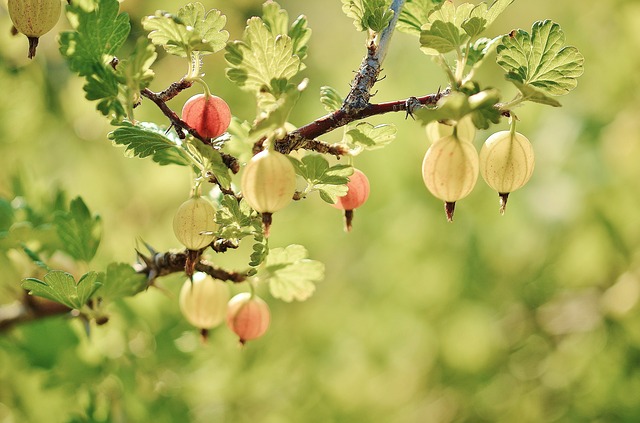Anxious about the fate of your dahlias and tomatoes in the warm weather? Dr Alastair Culham from the School of Biological Sciences explains the best time of day to water your garden in a new post for The Conversation.
When the warmer weather strikes, our gardens and outdoor spaces become a perfect oasis for rest and relaxation. But as nice as the hot weather might be, extreme conditions and record-breaking temperatures can wreak havoc on your plants.
There’s of course no question, that when it’s hot, plants will need watering, but knowing when’s the best time to do this can be tricky. Evening watering gives plenty of time for the water to penetrate the soil and for the plant to take it up, but there is a concern that leaves staying damp overnight will provide access to disease.
On the other hand, morning watering means leaves will dry out faster – but there is less opportunity for the water to penetrate the soil and for plants to take it up before the day gets hot. So what’s the answer?
All living things need water to allow chemical reactions in their cells that provide energy for growth. Plants also need water to carry nutrients from the soil to the growing cells. This water is drawn up to replace water lost through stomata – the breathing holes in leaves. These stomata are needed for gas exchange – carbon dioxide in, oxygen out – during photosynthesis. In high light levels, on sunny days, a lot of carbon dioxide is fixed to make sugars by photosynthesis. Loss of water is also important to cool plants on hot days.
If plants run short of water they shut down their stomata and photosynthesis stops and is replaced by photorespiration – a process that releases carbon dioxide. Desert plants get around this by breathing at night and storing carbon dioxide for release to photosynthesis during the day while the stomata are shut. But in our gardens, few plants are adapted to do that.
As the water shortage gets more severe plants will wilt – the beginning of cell collapse. Initially this is temporary wilting and the plant can recover rapidly when water is available. But further drying will cause permanent wilting, which results in the death of parts of the plant – or even all of it. Some plants survive drought by dying down below ground – this is the case with garden bulbs such as bluebells, daffodils, tulips and snowdrops. Others may shed their leaves or survive only as seeds.
Avoid full sun
What is generally agreed is that plants should not be watered while in full sun. The notion that wet leaves on sunny days cause scorch in plants was disproved nearly ten years ago. But there is no doubt that watering in full sun is not water efficient – as much of it will evaporate before entering the soil.
In the current hot breezy weather it is probably best to water in the early evening. This gives the plants enough time to dry out, but there is still the chance for overnight water uptake by the roots. And if you want to water in the morning then start very early – before the sun is shining.
When you water, the key thing is to ensure all layers of the soil in the root zone are wet. Regular light watering causes shallow rooting of plants and makes them less drought tolerant. So water plants thoroughly but occasionally – and don’t let the soil completely dry out because it becomes harder to wet at that stage.
You can water the soil rather than the plant, but take care not to cause the soil surface to form a hard pan. A bit of mulch (wood chips or compost) can protect the soil and keep moisture in – but beware of slugs.
Beware of over-watering
Plants can have too much of a good thing – and while the surface might be dry, the soil 15-20cm down, might not be. Most plants will have a greater root depth so could well be pulling up water that you can’t see.
The best rule of thumb is if the plant is not wilting it probably has access to water. Some herbaceous plants will wilt in full sun to save moisture but will then rehydrate as the temperature cools later in the day (temporary wilting). My garden lupins are doing this on a daily cycle at present, but they are deep rooted and they do pick up in the evening.
You must keep containerised plants well watered. Water on to the soil and water in the evening. As with any other watering, water thoroughly and then not again until there is sign of need. Greenhouse tomatoes will probably need watering daily at present. And if you are growing carrots make sure the soil stays moist or you may end up with split roots.
Your lawn will probably be looking quite dry, but don’t worry too much about this – as grasses die back when dry but can regrow quite quickly when the rains return. One things to remember though, is to avoid excessive walking on a brown lawn or you will end up with bald patches – this is because the combination of drought and heavy wear are just too much for your lawn to handle.
So the message is clear, enjoy your garden in the heat, but remember that your plants are similar to us humans – they too enjoy a bit of shade and a nice drink.
This post was first published on The Conversation, 4 July 2018. Alastair Culham is Associate Professor of Botany at the University of Reading. He is curator of the University of Reading’s Herbarium, and Scientific Coordinator for the EU i4Life project whose aim is to interlink and harmonise the taxonomic catalogues of six major global biodiversity programmes with the Catalogue of Life to create a virtual research community.

